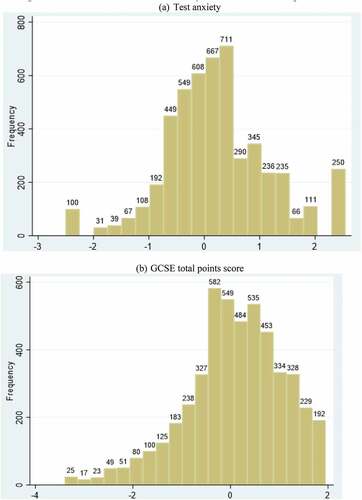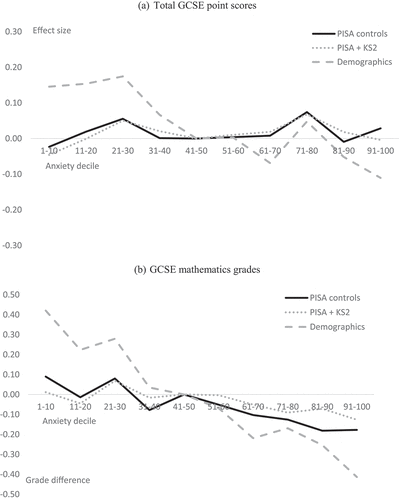Figures & data
Figure 1. The distribution of the test anxiety scale and GCSE total points scores. (a) Test anxiety. (b) GCSE total points score.

Table 1. The distribution of responses to each of the test anxiety items.
Figure 2. The link between test-anxiety decile and GCSE grades. (a) Total GCSE point scores. (b) GCSE mathematics grades.

Table 2. The link between test-anxiety decile and GCSE grades (parameter estimates).
